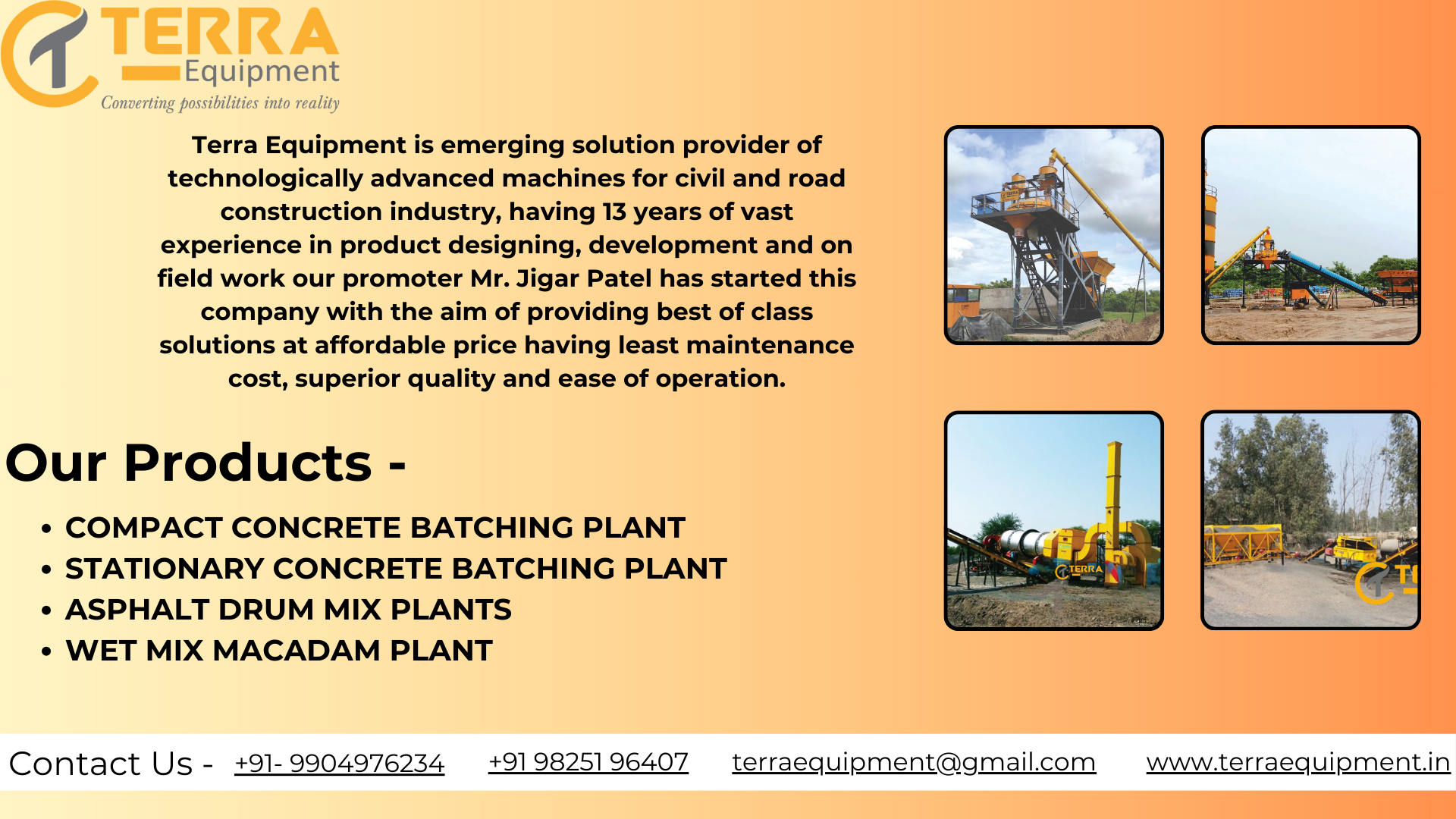Concrete Batching Plant
Description
A Concrete Batching Plant is a facility or a piece of machinery used to combine various ingredients to form concrete. These ingredients include water, sand, aggregate (rocks, gravel, etc.), fly ash, potash, and cement. The plant ensures that the mixture is accurate and consistent for high-quality concrete production.
There are two primary types of batching plants:
-
Dry mix plants: Mix dry materials and then discharge them into a transit mixer where water is added.
-
Wet mix plants: All ingredients, including water, are mixed in a central mixer before discharge.
How It's Made / Constructed
A concrete batching plant typically consists of the following main components:
-
Cement Silo: Stores cement and protects it from moisture.
-
Aggregate Bins: Separate bins for storing sand and aggregates.
-
Conveyor Belts / Skip Hoists: Move materials to the mixing unit.
-
Weighing System: Ensures accurate weighing of ingredients.
-
Mixers: Can be drum mixers, twin-shaft mixers, or pan mixers, depending on the plant type.
-
Control Panel / Software System: Used to monitor and automate the batching process.
-
Water and Admixture Dosing Systems: Ensure correct proportions of liquids are added.
The plant is assembled on-site or off-site, depending on whether it’s a stationary or mobile unit.
Where It Is Used
Concrete batching plants are widely used in:
-
Infrastructure Projects: Roads, bridges, tunnels
-
Commercial and Residential Construction
-
Industrial Sites
-
Dams and Irrigation Projects
-
Airport Runways
-
Railway Infrastructure
Why Choose a Concrete Batching Plant?
-
Precision: Consistent and accurate concrete mixtures.
-
Efficiency: Speeds up construction processes.
-
Automation: Reduces manual labor and human error.
-
Cost-effective: Reduces wastage and increases productivity.
-
On-demand Production: Meets specific project requirements quickly.
Advantages
-
High-quality output: Accurate mixing and consistent product quality.
-
Time-saving: Produces large volumes quickly.
-
Customizable: Recipe control for different types of concrete.
-
Environmental control: Dust collection systems reduce environmental impact.
-
Reduced labor: Automated processes reduce dependency on human workers.
-
Scalability: Suitable for both small and large-scale operations.
Importance in Construction
-
Provides reliable and timely supply of concrete.
-
Ensures project timelines are met without compromising quality.
-
Reduces the cost of buying pre-mixed concrete.
-
Improves the overall structural integrity of buildings through quality control.
Key Features
-
Multi-ingredient Weighing Systems
-
Real-time Monitoring and Reporting
-
Batching Accuracy and Speed
-
Modular Design (for easy transport and installation)
-
Advanced Mixing Technology
Significance
Concrete batching plants are critical for modern construction due to their role in:
-
Meeting increasing demands for concrete in infrastructure development.
-
Providing eco-friendly solutions through controlled processes.
-
Enhancing worker safety with reduced manual operations.
-
Supporting rapid urbanization and smart city development.
Frequently Asked Questions (FAQs)
Q1. What is the difference between a mobile and a stationary batching plant?
A: Mobile plants are portable and suitable for short-term or remote projects, while stationary plants are fixed and used for long-term, large-scale construction.
Q2. How is the quality of concrete ensured?
A: Through computerized control systems that ensure precise measurement and mixing of materials.
Q3. Can a batching plant operate in extreme weather?
A: Yes, most modern plants are equipped with weather-resistant structures and heating systems for cold conditions.
Q4. Is it environmentally friendly?
Q5. How long does it take to install a concrete batching plant?
A: Mobile plants can be set up in 2–3 days; stationary plants may take several weeks depending on size and site preparation.
Conclusion
Concrete batching plants are the backbone of construction projects, offering consistency, efficiency, and precision in concrete production. Whether for a skyscraper or a highway, the quality and timeliness of concrete supply are crucial—and that’s where batching plants play a pivotal role.
Choosing the right batching plant can significantly affect the outcome of any construction venture, making it an essential investment for builders and contractors alike.

